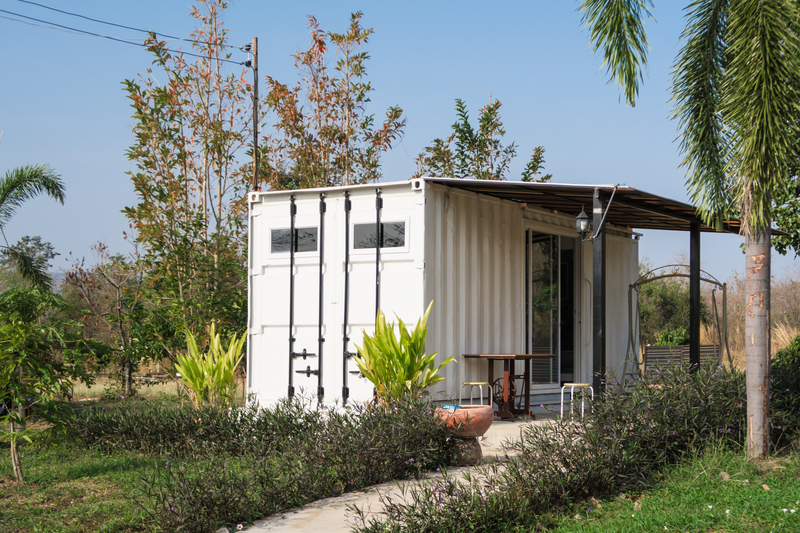PPE Waste Disposal Methods Everyone Should Know
PPE waste disposal has become a critical issue, especially since the onset of the COVID-19 pandemic. The widespread use of Personal Protective Equipment--such as masks, gloves, gowns, and face shields--has led to a dramatic increase in plastic and hazardous waste. Knowing how to handle PPE disposal responsibly is essential for individuals, communities, and organizations to reduce environmental impact and minimize public health risks. In this comprehensive guide, we'll delve into the proper methods for disposing of PPE, explore their environmental consequences, and highlight innovative solutions for safe and sustainable waste management.
Understanding PPE Waste: What Is It and Why Does It Matter?
Personal Protective Equipment (PPE) comprises clothing and gear used to minimize exposure to hazards that cause serious workplace injuries and illnesses. With the rise of disposable PPE, managing its waste has become a new challenge for waste management systems. PPE waste includes:
- Single-use masks (surgical and N95)
- Disposable gloves (latex, nitrile, vinyl)
- Protective gowns and suits
- Face shields and goggles
- Shoe covers and hairnets
Improper PPE waste management can result in environmental pollution, harm to wildlife, and the spread of infectious diseases among the human population. Therefore, learning the correct disposal methods for PPE is a responsibility everyone shares, from healthcare workers to regular citizens.

Why Is Responsible PPE Waste Disposal Important?
The consequences of improper PPE waste disposal extend far beyond personal health. Here's why safe PPE disposal should be everyone's priority:
- Public Health Protection: Discarded PPE can carry pathogens, which increases risks of disease transmission among waste workers and the public.
- Environmental Impact: Most PPE is made from non-biodegradable plastics, contributing to land and aquatic pollution when not disposed of properly.
- Wildlife Hazards: Animals can become entangled in PPE or ingest it, causing injury, suffocation, or death.
- Resource Management: Effective PPE disposal methods support recycling and waste-to-energy opportunities.
By understanding and adopting the best PPE waste management practices, we can protect our environment, communities, and future generations.
Methods for PPE Waste Disposal Everyone Should Know
There are several PPE waste disposal methods, each suited for different types of PPE and risk levels. Below, we explain the most important ways to handle various kinds of PPE waste.
1. Segregation at the Source
Proper segregation is the first step towards effective PPE waste management. Here's how:
- Identify the risk: Is the PPE contaminated (used in a healthcare setting or by someone infected) or non-contaminated (daily use by the public)?
- Separate accordingly: Place contaminated PPE in biohazard bags (usually yellow or red, depending on regulations) and non-contaminated PPE in regular or recycling bins, based on local waste policies.
- Avoid cross-contamination: Do not mix PPE waste with recyclable plastics or household garbage to prevent the spread of pathogens and simplify processing.
2. Safe Packaging
Containment is key to ensuring that PPE waste remains isolated throughout transit:
- Use durable bags: Double-bag highly contaminated PPE when necessary to avoid leaks.
- Seal properly: Securely seal bags to prevent accidental exposure to waste handlers.
3. Collection and Transport
After packaging, PPE waste disposal relies on safe collection and transportation:
- Dedicated containers: Use marked containers (with a biohazard symbol) for collection, especially in hospitals or clinics.
- Scheduled pick-ups: Regularly schedule PPE waste collection to avoid overflow or accidental exposure.
- Trained personnel: Only allow trained waste management staff to handle and transport PPE waste.
4. Disinfection
For certain types of PPE waste, disinfection before disposal can reduce risk to waste handlers and the environment:
- Spraying disinfectants: Spray or soak used PPE in approved disinfectants before bagging.
- High-temperature decontamination: In healthcare settings, some PPE waste may be sterilized in autoclaves before final disposal.
5. Final Disposal Methods
Disposal methods for PPE waste fall into several categories:
- Incineration: The most common PPE waste disposal method, especially for medical-grade waste. High-temperature incinerators destroy pathogens and reduce the waste volume. However, emissions must be monitored to avoid air pollution.
- Landfill: Non-contaminated, non-recyclable PPE may be sent to sanitary landfills. Ensure the waste is bagged and sealed to prevent it from blowing away or leaching chemicals.
- Autoclaving: Medical facilities often use autoclaves to sterilize PPE waste before shredding and disposing in landfills or through recycling (where possible).
- Chemical Disinfection: In some settings, PPE waste is treated with chemicals to neutralize pathogens before disposal.
6. Recycling and Upcycling Initiatives
While recycling PPE waste poses challenges, some innovative programs and technologies are making headway:
- PPE recycling bins: Specialized bins and collection sites for used masks, gloves, and face shields are available in some communities and organizations.
- Plastic recovery: Some companies turn single-use PPE plastics into new products (like benches, tiles, or paving).
- Energy recovery: Waste-to-energy plants can safely convert PPE waste into electricity or heat through controlled incineration.
Always check local guidelines before attempting to recycle PPE, as many facilities do not accept contaminated or mixed-material items.
PPE Waste Disposal in Different Settings
The context in which PPE waste is generated affects how it should be handled. Here's how PPE disposal methods differ based on setting:
1. Healthcare Facilities
- Strict protocols: Hospitals and clinics must adhere to regulatory standards for hazardous waste.
- Biohazard bins: Use color-coded, labeled bins for specific types of PPE waste.
- Onsite sterilization: Use autoclaves and incinerators for managing large volumes of contaminated PPE.
2. Public Spaces and Businesses
- Accessible bins: Place dedicated PPE waste bins in strategic locations (entrances, restrooms).
- Awareness: Display clear instructions for PPE disposal to prevent misuse and contamination.
3. Households
- Bag securely: Place used masks, gloves, and other single-use PPE in sealed bags before putting them in the general waste bin.
- Separate from recyclables: Never put used PPE in recycling bins unless specified by local authorities.
4. Schools and Educational Institutions
- Awareness programs: Educate students and staff on the importance of proper PPE disposal.
- Dedicated containers: Install bins for collecting used masks and other PPE at entry points and common areas.
Environmental Impacts of Improper PPE Waste Disposal
Disregarding safe PPE disposal procedures leads to extensive environmental harm:
- Plastic pollution: PPE items like masks and gloves take hundreds of years to break down, accumulating in landfills and water bodies.
- Microplastic formation: Sunlight and physical forces break PPE down into microplastics that can enter the food chain.
- Wildlife threat: Animals mistake PPE for food or become entangled, leading to injury or death.
Being mindful of proper PPE recycling and disposal methods is a simple yet impactful way to protect biodiversity and prevent future environmental crises.
Innovative PPE Waste Management Solutions
With growing awareness, organizations and governments are seeking novel solutions for PPE waste disposal:
- Biodegradable PPE: Scientists are developing PPE made of plant-based or compostable materials to reduce long-term waste.
- PPE take-back programs: Businesses and healthcare institutions are launching programs to collect and responsibly recycle used PPE.
- Automated sorting and processing: Advanced facilities are using robots and AI to sort, disinfect, and recycle PPE more efficiently.
- Community awareness campaigns: Local authorities are educating citizens on safe disposal options to curb household and public littering.
Best Practices for Individuals: PPE Waste Disposal at Home
Everyone can contribute to effective PPE waste management by following these practical tips:
- Do not litter: Always place used PPE in a sealed bag before disposing of it in the trash bin.
- Wash hands: Clean your hands thoroughly after handling used PPE or taking out the trash.
- Educate others: Share knowledge of safe disposal methods with family and friends.
- Avoid burning: Never attempt to burn PPE at home, as it can release toxic fumes.
Regulations and Guidelines for PPE Waste Disposal
Countries and organizations have introduced guidelines to standardize PPE waste disposal. Some general recommendations include:
- Color-coded waste bags: Use designated colors for infectious, non-infectious, and recyclable PPE waste.
- Mandatory labeling: Clearly mark PPE waste bins and bags to avoid confusion.
- Training for staff: Ensure that all personnel involved in waste handling are trained in safe PPE waste management procedures.
- Reporting: Maintain records of PPE waste generation and disposal, especially in healthcare settings.

The Future of Sustainable PPE Waste Management
The surge in PPE use highlights the urgent need for more sustainable solutions. Moving forward, a combination of technological innovation, public education, and stricter regulations will play a vital role in minimizing environmental impacts related to PPE waste. Key strategies include:
- Investing in biodegradable PPE alternatives
- Expanding recycling infrastructure
- Encouraging corporate responsibility in PPE design and disposal
- Raising public awareness on correct PPE waste disposal methods
By making informed choices and advocating for greener approaches, we all play a part in closing the loop on PPE waste.
Conclusion: Take Action for Safer and Cleaner Communities
When it comes to PPE waste disposal methods everyone should know, the key lies in awareness, action, and community involvement. By properly segregating, packaging, collecting, and disposing of PPE waste, we can protect both public health and the environment. Explore local guidelines, participate in recycling programs when available, and spread the word about responsible PPE waste management.
Together, we can address the rising challenge of PPE waste and build a future that prioritizes safety, sustainability, and shared responsibility. Start today--because every step counts!
